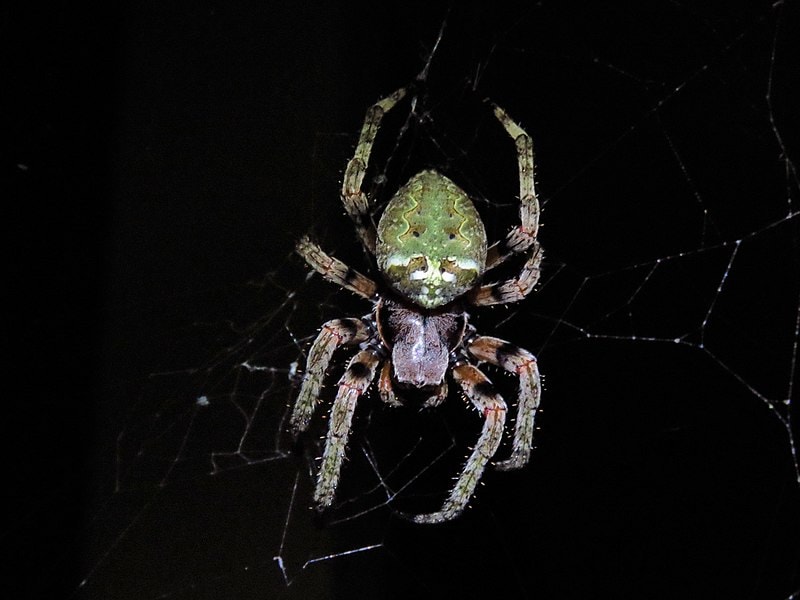Most residents of the Garden State are probably familiar with the terrifying horse-headed beast, the Jersey Devil. However, there are smaller creatures New Jerseyans should keep an eye out for that might be lurking in the woods. New Jersey has over 20 spider species distributed throughout the state. While most of these arachnids are harmless, the deadliest poisonous spider in New Jersey is the black widow.
We’ve put together a comprehensive list of the most common spiders in New Jersey. From the Pine Barrens to the beaches, here are 14 spiders that reside in the Garden State.

The 14 Spiders Found in New Jersey
1. Black Widow

| Species: | Lactrodectus variolus |
| Longevity: | 1 year |
| Good to own as a pet?: | No |
| Legal to own?: | No |
| Adult size: | 5 cm |
| Diet: | Carnivorous |
There are two black widow spider species in New Jersey, including the northern black widow and the southern black widow. While both species look strikingly similar and feature large, shiny black abdomens and an hourglass shape, the southern black widow has more red coloring on its body. Both of these notoriously poisonous spiders are extremely dangerous and the females are known for killing and consuming their partners after mating. If you are bitten by a black widow, seek immediate medical attention.
2. Trap Door Spider

| Species: | Ummidia |
| Longevity: | 1 year |
| Good to own as a pet?: | No |
| Legal to own?: | Yes |
| Adult size: | 1 inch |
| Diet: | Carnivorous |
The trap door spider got its name for its ability to build underground tunnels secured with trap doors. Ranging from dark brown to a light reddish-brown, the trap door spider has a hairy abdomen. They are agile hunters that run fast to catch and conquer their prey.
3. Wolf Spider

| Species: | Lycosidae |
| Longevity: | 1 year |
| Good to own as a pet?: | No |
| Legal to own?: | Yes |
| Adult size: | 3 inches |
| Diet: | Carnivorous |
Despite its large size and scary appearance, the wolf spider is not actually a dangerous arachnid. The wolf spider can be distinguished by its horizontal row of four red eyes, large size, and furry black body. While not poisonous, a bite from a wolf spider may cause swelling, redness, and some pain.
4. American Nursery Web Spider
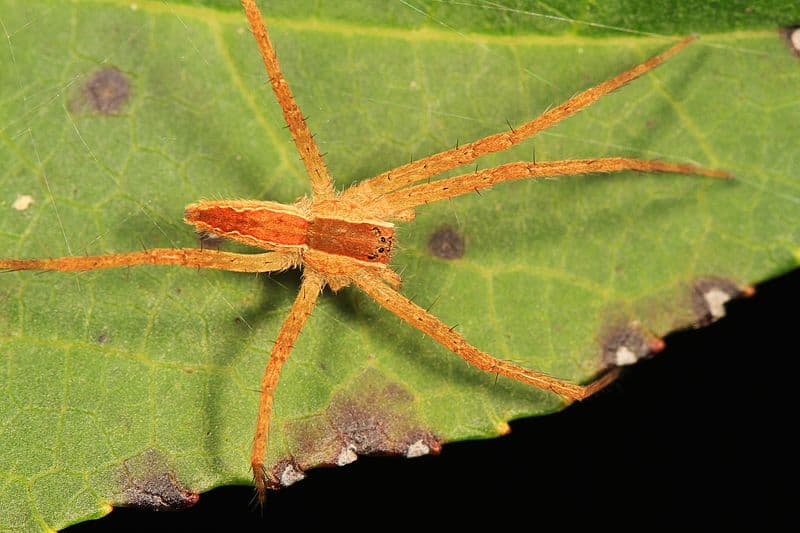
| Species: | Pisaurina mira |
| Longevity: | 1 year |
| Good to own as a pet?: | No |
| Legal to own?: | Yes |
| Adult size: | 3/4 inch |
| Diet: | Carnivorous |
The nursery web spider is a brown, long-legged spider species that is endemic to the eastern United States. Often confused with wolf spiders, the American nursery web spider has a light brown body, long, slender legs, and some yellowish markings along its abdomen. Bites from this species are not dangerous and cause very mild side effects.
5. American Grass Spider
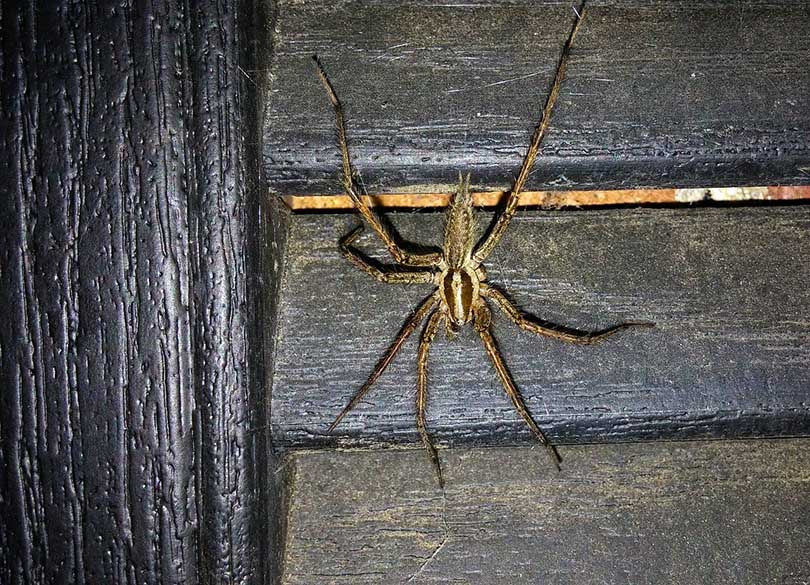
| Species: | Agelenopsis |
| Longevity: | 1 year |
| Good to own as a pet?: | No |
| Legal to own?: | Yes |
| Adult size: | 3/4 inch |
| Diet: | Carnivorous |
Found throughout the United States, the American grass spider is one of the fastest spider species out there. They can be fun to watch if you gently trigger the web using a long blade of grass. Boasting an oblong abdomen with two white stripes, long, brown legs, and a black body, the American grass spider is harmless to humans.
6. Fishing Spider

| Species: | Dolomedes |
| Longevity: | 1 year |
| Good to own as a pet?: | No |
| Legal to own?: | Yes |
| Adult size: | 4 inches |
| Diet: | Carnivorous |
As its namesake suggests, the fishing spider is a semi-aquatic species that thrives both on land and in the water. Found in nearly every US state, these large arachnids hunt in streams, ponds, and along the banks. They have even been known to kill small fish! This species is predominantly black with patchy brown markings. It is not a threat to people.
7. Star-Bellied Orb Weaver Spider
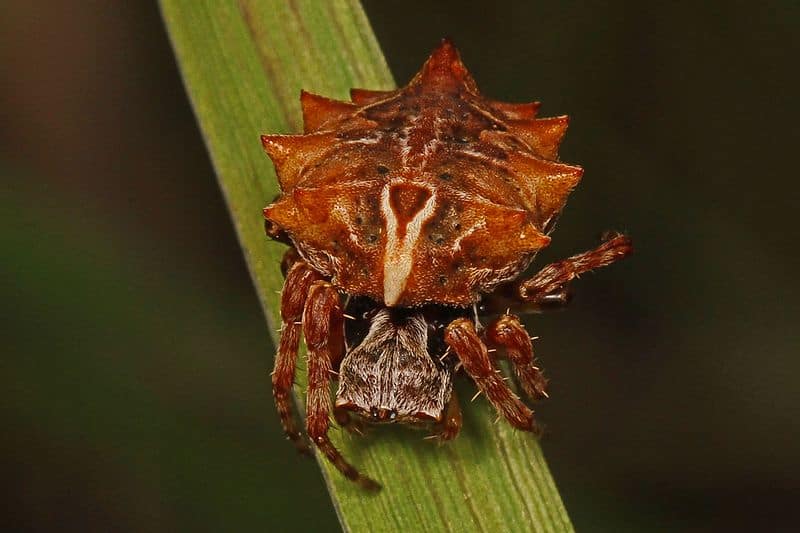
| Species: | Acanthepeira |
| Longevity: | 1 year |
| Good to own as a pet?: | No |
| Legal to own?: | Yes |
| Adult size: | 0.6 inches |
| Diet: | Carnivorous |
A truly distinct-looking spider, the star-bellied orb weaver has a bright brown abdomen adorned with several spikes. This gives the spider its crown-like appearance. A smaller arachnid, the star-bellied orb weaver spins vertical webs to catch its prey. It is not dangerous to humans.
8. Giant Lichen Orbweaver Spider
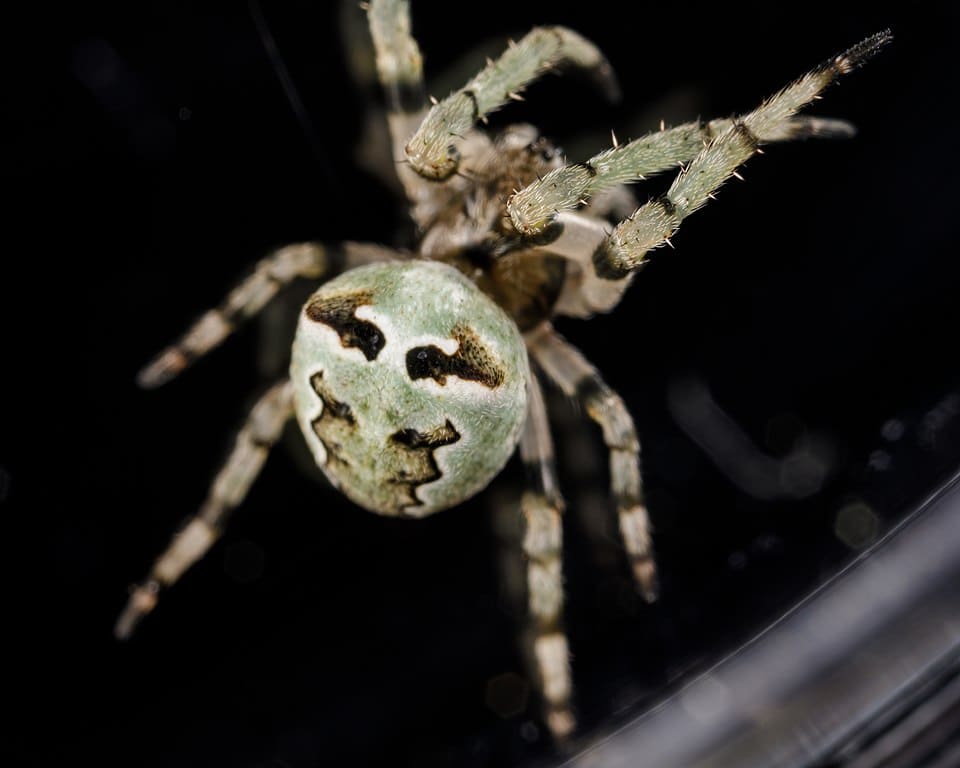
| Species: | Araneus Bicentenarius |
| Longevity: | 1 year |
| Good to own as a pet?: | No |
| Legal to own?: | Yes |
| Adult size: | 1 inch |
| Diet: | Carnivorous |
A nocturnal species that spins large webs that can be eight feet in diameter, the giant lichen orbweaver spider can grow to be around one inch long. Its main colors are white, green, black, orange, and gray. This spider species is not poisonous to humans and rarely ever bites.
9. Orchard Spider
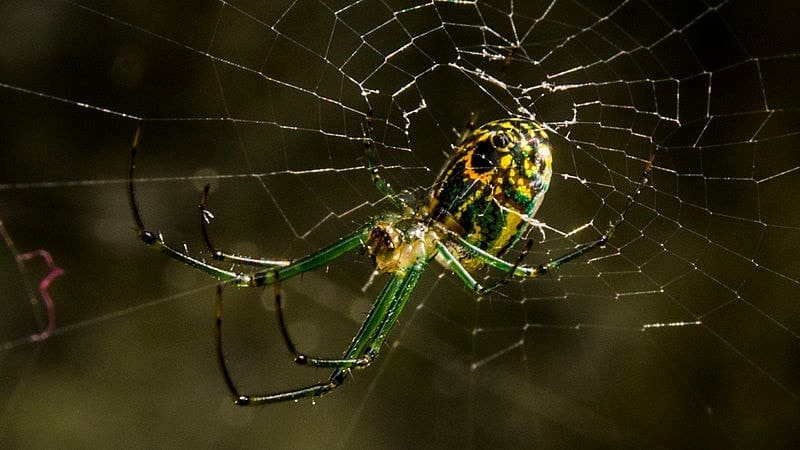
| Species: | Leucauge venusta |
| Longevity: | 1 year |
| Good to own as a pet?: | No |
| Legal to own?: | Yes |
| Adult size: | 7 mm |
| Diet: | Carnivorous |
Part of the orb-weaver spider family, the orchard spider is mainly found throughout the eastern United States. A very colorful little spider, the orchard spider has bright green legs and a white body with black and neon-yellow markings. A rather timid arachnid, the orchard spider won’t bite unless provoked and is not harmful to humans.
10. Red-Spotted Ant Mimic Spider
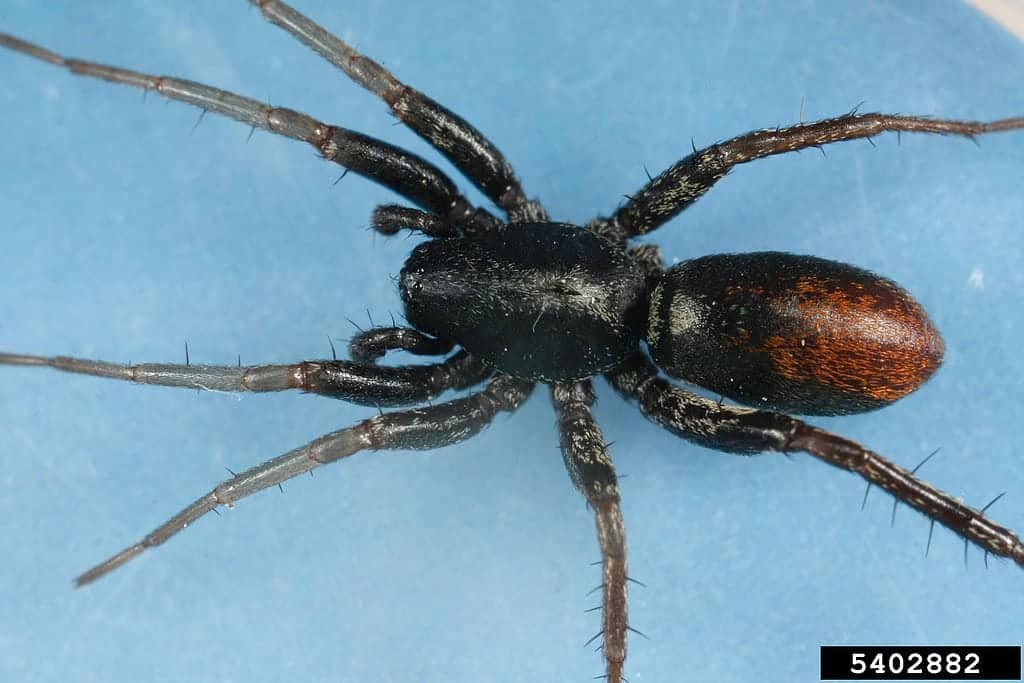
| Species: | Castianeira descripta |
| Longevity: | 1 year |
| Good to own as a pet?: | No |
| Legal to own?: | Yes |
| Adult size: | 13 mm |
| Diet: | Carnivorous |
The red-spotted ant mimic spider got its name for its similar behavior and look to an ant. This arachnid will mimic ants to gain trust with its prey, allowing them to get close enough to it for an efficient attack. The red-spotted ant mimic spider is a deep blackish-brown and does not weave webs. Instead, it constantly wanders around, in search of its next meal.
11. Flower Crab Spider
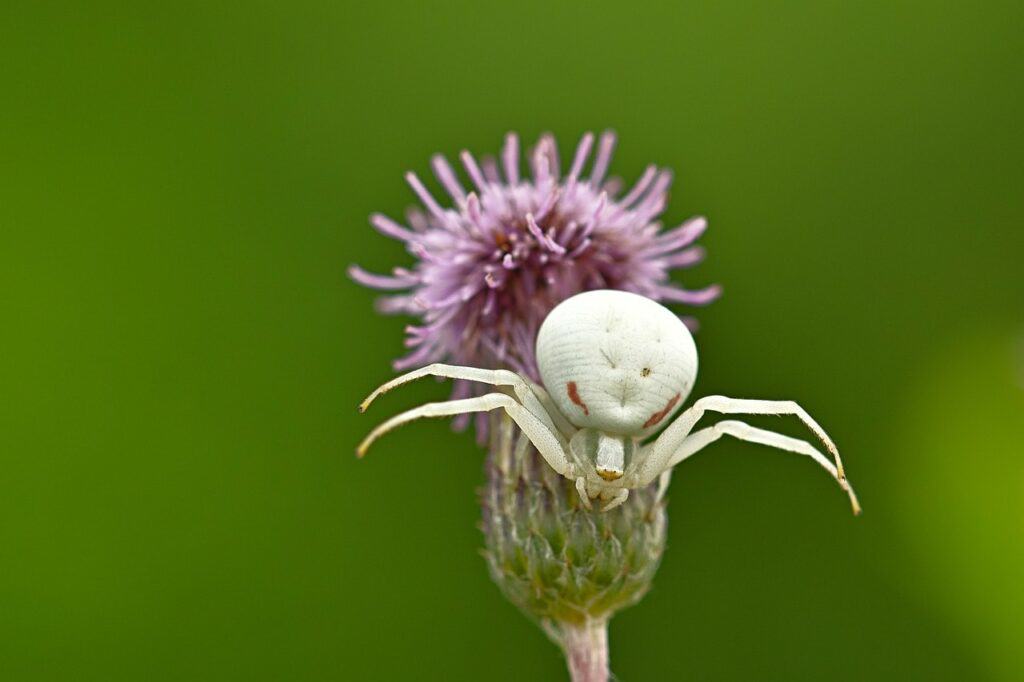
| Species: | Misumena |
| Longevity: | 1 year |
| Good to own as a pet?: | No |
| Legal to own?: | Yes |
| Adult size: | 5 mm |
| Diet: | Carnivorous |
A strikingly colored spider, the flower crab spider actually hunts its prey in or around flowers. Its brightly-hued body, which is typically bright yellow or white, blends in with the natural flora, effectively allowing the arachnid to hide before it strikes. The flower crab spider is not aggressive and will either hide or run instead of attacking humans.
12. Dimorphic Jumper Spider

| Species: | Maevia inclemens |
| Longevity: | 1 year |
| Good to own as a pet?: | No |
| Legal to own?: | Yes |
| Adult size: | 0.2–0.3 inches |
| Diet: | Carnivorous |
The dimorphic jumper spider is a unique arachnid that is found throughout the Eastern United States and Southeastern Canada. Its common name comes from the fact that there are two kinds of males that differ in behavior and appearance, so-called morphs. This spider is either black (dark morph) or gray (gray morph) in color and has light legs.
13. Daddy Long Legs Spider

| Species: | Pholcidae |
| Longevity: | 1 year |
| Good to own as a pet?: | No |
| Legal to own?: | Yes |
| Adult size: | 1 inch |
| Diet: | Carnivorous |
An extremely eerie-looking spider, the daddy long legs spider has a tiny body and long, slim legs. Also called the cellar spider, this arachnid prefers cool, dark places to call home. There are almost 2,000 species of this spider found throughout the United States and the world. A shy spider, the daddy long legs is not dangerous to humans.
14. Zebra Spider

| Species: | Salticus scenituc |
| Longevity: | 1 year |
| Good to own as a pet?: | No |
| Legal to own?: | Yes |
| Adult size: | 6 mm |
| Diet: | Carnivorous |
The zebra spider is a kind of jumping arachnid that is plentiful throughout the Northern Hemisphere. As its name implies, the zebra spider can be identified by its distinct white and black abdomen. A tiny spider growing to be about 6 mm or ¼ inches long, the zebra spider is not harmful to people.

Conclusion
Despite being the most densely populated state in the country, New Jersey is home to a large variety of flora and fauna. These 14 spiders can be found across the state. While most don’t pose a threat to humans, it’s important to never, ever touch a black widow.
You may also want to read:
Featured Image Credit by Annika Lindqvist, Wikimedia Commons CC 4.0 International (Araneus bicentenarius 84400223)
